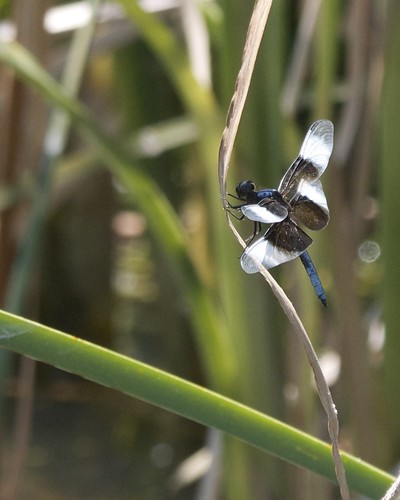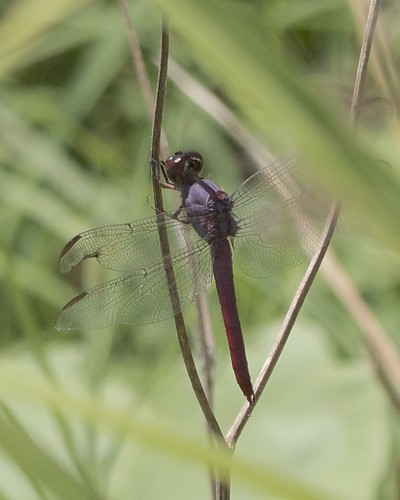Saturday morning I got a late start, but I wasn't so interested in finding birds. Right now we are in a surprisingly short span of time when hardly any birds are migrating. The north-bound migrants have mostly completed their journey, and it's still a little early to start seeing south-bound migrants. (Although there are already reports of a few south-bound shorebirds in central and coastal Texas.) Our summer and year-round resident species are less active right now too, many having already raised a brood.
Over the past few months I've gotten interested in dragonflies and plants, and with help from people on iNaturalist and the Migratory Dragonfly Partnership web sites I've gotten a great start learning about them. Dragonflies are most active in the middle of the day, after the birds have quieted down. So getting a late start didn't put me at a disadvantage. I started at Parmer Village and made my way upstream to the last dam on the creek. I was happy to find seven or eight species of dragonflies actively flying over the water. A few I could identify were Red Saddlebags, Black Saddlebags. Eastern Pondhawk, Roseate Skimmer, Widow Skimmer, and Blue Dasher. I got this photo of a male Blue Dasher:
This was my best dragonfly photo because Blue Dashers are "perchers".
They hunt for prey and defend their territory from a perch. They'll make a foray out to catch something and often come back to the exact same spot. (The vertical posture is to lessen their exposure to the mid-day sun.) Most of the other species are "fliers". They perform these same behaviors while constantly in flight and are thus harder to photograph. Later I finally saw a few of these fliers land and got a few photos. Here's a Widow Skimmer:
And here's a Roseate Skimmer:
Dragonflies are a new world for me, and I'm excited to learn more. Many species are migratory and not much is known about their migrations. The Migratory Dragonfly Partnership has a few citizen science projects to increase our knowledge of dragonfly migrations, and they have some valuable material for learning the most common five migratory species. Check it out!
Here are my iNaturalist observations from the morning, including the dragonflies, a few other insects, and some really cool plants. The plants were in the stretch of land between the creek bed and the trail, between the Parmer Village pond and the last dam on the creek. iNaturalist is another great citizen science project, both for learning and contributing. Here's the NASWC Wild project I created there to keep track of wild plants and animals we find here. Check it out, and sign up and join the project!




No comments:
Post a Comment